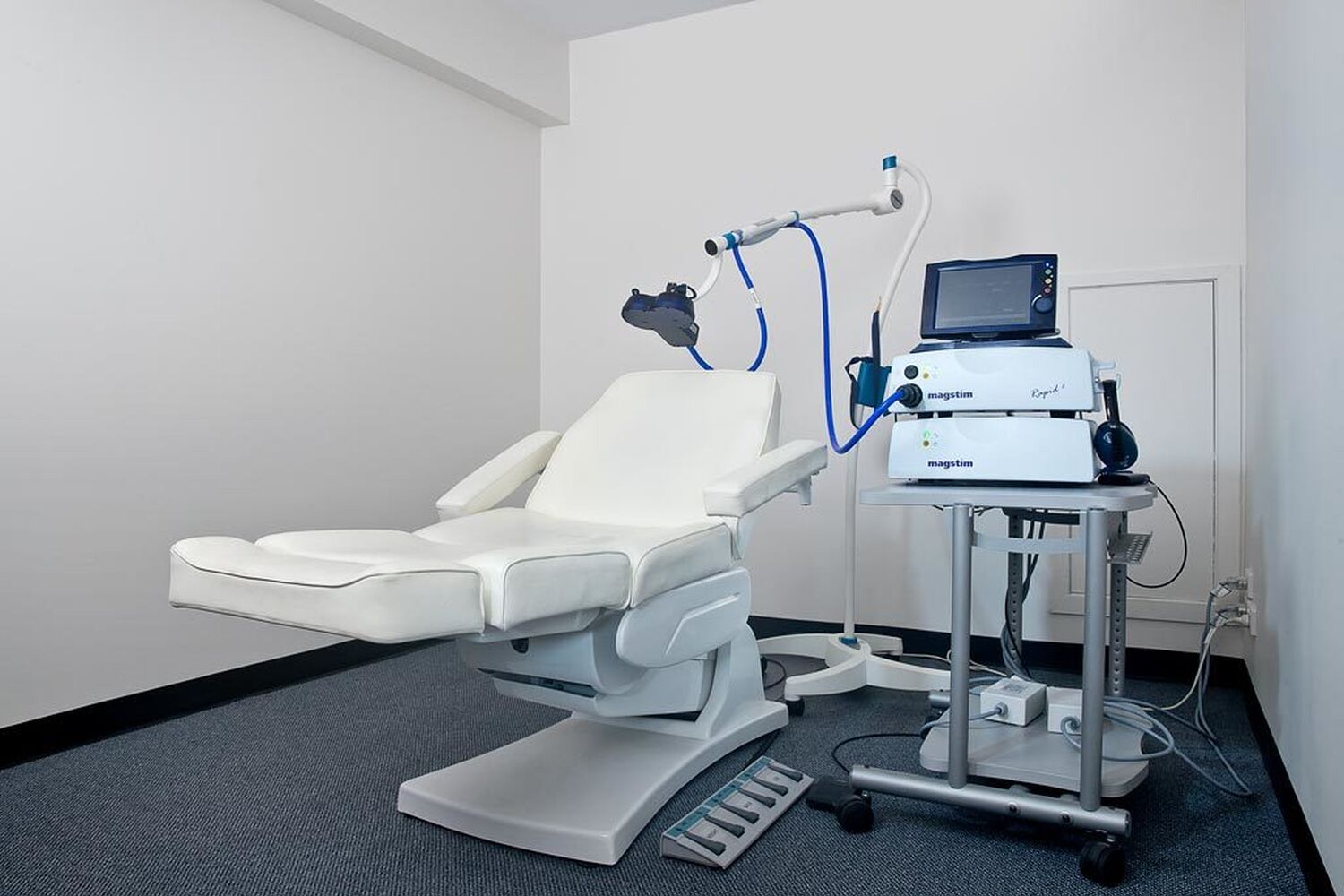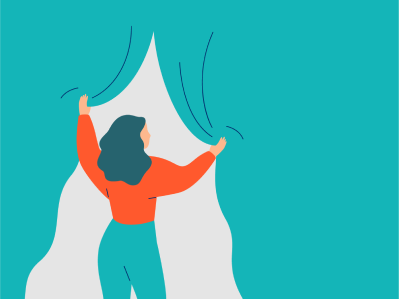Repetitive Transcranial Magnetic Stimulation (rTMS)
What is rTMS?
Repetitive Transcranial Magnetic Stimulation (rTMS) is a non-invasive procedure that involves the focused application of magnetic energy to superficial regions of the brain, inducing small electrical currents. During an rTMS procedure, an electrical current passes through a small coil placed close to the scalp. This current induces a magnetic field. The magnetic field can pass into the brain without resistance. If the magnetic field is of sufficient strength, it will stimulate electrical activity in nerves below the coil, that is, in superficial regions of the brain.
rTMS in Depression
Studies have evaluated the role of rTMS in the treatment of depression since the mid-1990s. These studies have clearly shown that rTMS is more effective than a placebo type of stimulation, especially in patients who have not responded well to antidepressant medication treatment.
How is rTMS administered?
rTMS is administered as a course of 20 treatments which are generally administered on a daily basis. Sessions usually take between 20 and 45 minutes per day depending on the protocol being utilised. During an rTMS session a patient is awake, alert and aware of what is happening at all times and is seated in a comfortable chair. Before the treatment course begins, the treating Psychiatrist will undertake threshold testing to ensure that the correct prescription is tailored for the patient for the treatment sessions.
You may feel small twitches in the hand during this procedure. It is not painful. This procedure is done to establish how high the machine intensity needs to be sent to affect the brain in an individual patient.
During the treatment itself, a coil is usually placed on the scalp (held by hand or with a coil stand) near the front region of the brain. This may be on the left or right depending on how the treatment is being given. The coil is connected to a machine that generates the electrical current. You may feel a tapping sensation under the coil (this occurs due to a twitch produced in scalp muscles as the magnetic field crosses into the brain). The magnetic field can also stimulate small nerves around the head and face, producing a muscle twitch in the forehead, face or eye region.
Antidepressant medications may be prescribed, especially to try and prevent relapse after the treatment with rTMS finishes.

Side Effects
There are several potential side effects that might be experienced during an rTMS procedure. First, a headache or neck-ache can occur, similar to a tension headache, caused by the stimulation of nerves in the scalp. This occurs in approximately five of every one hundred participants studied and will often improve rapidly with simple pain medication such as ‘Aspirin’ or ‘Panadol’. Second, the stimulation itself may be uncomfortable.
As the magnetic field passes into the brain, it can cause stimulation of muscles in the scalp causing them to contract. This can feel like a twitch, a tapping sensation or a brief muscle cramp. How strong this feels varies dramatically between patients: some feel almost nothing and others a stronger sensation. Those who do find it uncomfortable usually find they get used to the sensation over a few days and the strength of the stimulation pulse can be lowered until then
Risks
The main concern associated with rTMS is its potential to cause a fit or seizure. Safety guidelines to limit the dose of rTMS used, started in the late 1990’s and there have been very few seizures related to the treatment since then. You should always tell your Doctor if you change your medication or experience other medical issues during a course of rTMS as medication changes or medical illness could affect the risk of seizure.
People excluded from rTMS include those with a diagnosis of epilepsy, an active brain illness such as a recent stroke or anything that may be affected by the magnetic field. This can include metal implants in the head, surgical clips, cardiac pacemakers, implanted medication pumps or electrodes. rTMS may also be avoided if a patient has an unstable medical condition (for example, heart disease) that could be exacerbated if they were to suffer a seizure. The safety of rTMS in pregnancy has not been evaluated and is not recommended at this time. If any of those conditions are relevant to you, it is very important that you let us know prior to undertaking treatment.
Treatment Program
Toronto Private Hospital has an accredited team of Clinicians who administer rTMS as part of an inpatient admission program. Average length of stay is 21 days. During this time, you will be enrolled in a depression specific psychoeducation program, designed specifically to provide the skills and strategies to support your recovery.
How to access rTMS
Patients wishing to access rTMS at Toronto Private Hospital will need a referral from their GP. Patients will require Private Health Insurance with
Hospital Cover to access rTMS, or be willing to self fund. For further information, call the Toronto Private Hospital Mental Health Intake Officer on 1800 311 470
